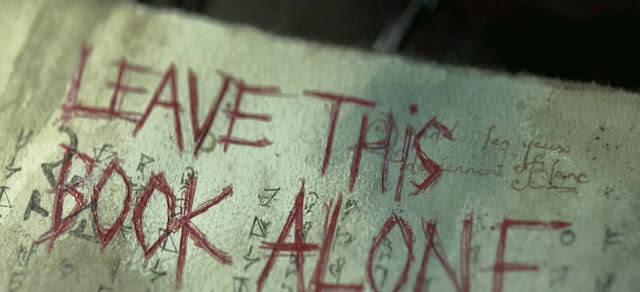Lurking on the Book Shelves: Horror in Space, Queens of the Abyss & The 90s Teen Horror Cycle
Editor Michele Brittany’s Horror in Space: Critical Essays on a Film Subgenre gathers a number of essays examining the various concepts, tropes and ideas associated with space horror. In her introduction, Brittany, book review editor for the Journal of Graphic Novels and Comics and co-chair of the Ann Radcliffe Conference, sets out a definition of space horror, notes its predominant themes and discusses its evolution throughout the history of cinema, from Georges Méliès’ A Trip to the Moon (1902) to more recent titles including Sunshine (2007) and Prometheus (2012). Elsewhere, the various contributors discuss titles including Alien, Event Horizon, John Carpenter’s Ghosts of Mars, Jason X and Mario Bava’s Planet of the Vampires and how filmmakers have exploited the setting of the great unknown to probe concepts such as the Final Girl/Survivor, the ‘uncanny valley’, the isolationism of space travel, religion and supernatural phenomena. From Juliane Schlag’s Out of Space – Out of Time: Looking at the Factors of Time in Space Horror Movies and Janet Joyce Holden’s We’re All Alone, Out Here: Isolation and its Contribution to Space Horror in Film, to Kevin Shabot’s Leprechaun 4 and Jason X: Camp, Paracinema and the Postmodern Sequel, Horror in Space: Critical Essays on a Film Subgenre is an in-depth and fascinating study. As an aside, it should also put paid to the recent Twitter debate sparked by a journalist who claimed, ‘horror cannot be set in space.’
Published by the British Library as part of their Tales of the Weird collection, Queens of the Abyss: Lost Stories from the Women of the Weird is a collection of material by women writers whose work was crucial to the evolution of the genre. Many of the tales included have never been published before. Featuring work from authors such as Mary E. Braddon, Edith Nesbit, Marjorie Bowen, Leonora Carrington, G.G. Pendarves and Greye La Spina, to name but a few, Queens of the Abyss is a treasure trove for lovers of obscure and haunting Weird literature. In his introduction, editor Mike Ashley discusses the too often accepted posture that it was male writers who developed and pushed the boundaries of the Weird tale during the nineteenth and early twentieth centuries. Bringing together the work of more established women authors – such as Edith Nesbit and Frances Hodgson Burnett - whose genre work is now often unfairly overlooked, and stories from lost or obscure authors whose work filled the early pulp magazines, Ashley demonstrates how the women whose work is included here, and others like them, helped to pioneer and develop the Weird Tale, which itself sprang out of the shadow of earlier Gothic works by the likes of Ann Radcliffe and Clara Reeve.
Author and editor Alexandra West's The 1990s Teen Horror Cycle: Final Girls and a New Hollywood Formula is an in-depth study examining the youth subcultures and politics of 90s America that fed into and influenced a body of teen-orientated horror films produced at that time. During the 90s, the horror film moved into the mainstream in ways it had never done so before. A slew of smart, savvy and cine-literate titles were produced specifically for (and marketed to) teenaged audiences who were just as smart, savvy and cine-literate. Such films explored by West include Buffy the Vampire Slayer, The Craft, Scream, I Know What You Did Last Summer, Urban Legend and Cherry Falls. These films and their ilk were peopled by refreshingly self-aware characters portrayed by casts of up and coming, recognisable actors from various hit television shows. West points to a strong influence from third wave feminism, the rise of ‘girl power’ and a growing distaste for consumerism which helped to define the younger audiences who embraced and rejected the commercial appeal of these films. Along the way she looks at the influence of postmodernism, violence in entertainment, high school massacres, the impending millennium and how these and other cultural events influenced the makers of teen-orientated horror films at this time.
On a personal note, I LOVE this book. Not only is it an absolute joy to read intelligent and thought-provoking analyses of some of my all-time favourite horror films (I was just discovering horror in the 90s, so many of these titles hold a special place in my heart), but West's approach, insight and wit reveal these titles in a whole new light.





